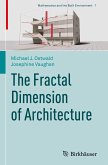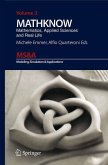na broad sense Design Science is the grammar of a language of images Irather than of words. Modern communication techniques enable us to transmit and reconstitute images without needing to know a specific verbal sequence language such as the Morse code or Hungarian. International traffic signs use international image symbols which are not specific to any particular verbal language. An image language differs from a verbal one in that the latter uses a linear string of symbols, whereas the former is multi dimensional. Architectural renderings commonly show projections onto three mutual ly perpendicular planes, or consist of cross sections at different altitudes capa ble of being stacked and representing different floor plans. Such renderings make it difficult to imagine buildings comprising ramps and other features which disguise the separation between floors, and consequently limit the cre ative process of the architect. Analogously, we tend to analyze natural struc tures as if nature had used similar stacked renderings, rather than, for instance, a system of packed spheres, with the result that we fail to perceive the system of organization determining the form of such structures. Perception is a complex process. Our senses record; they are analogous to audio or video devices. We cannot, however, claim that such devices perceive.








